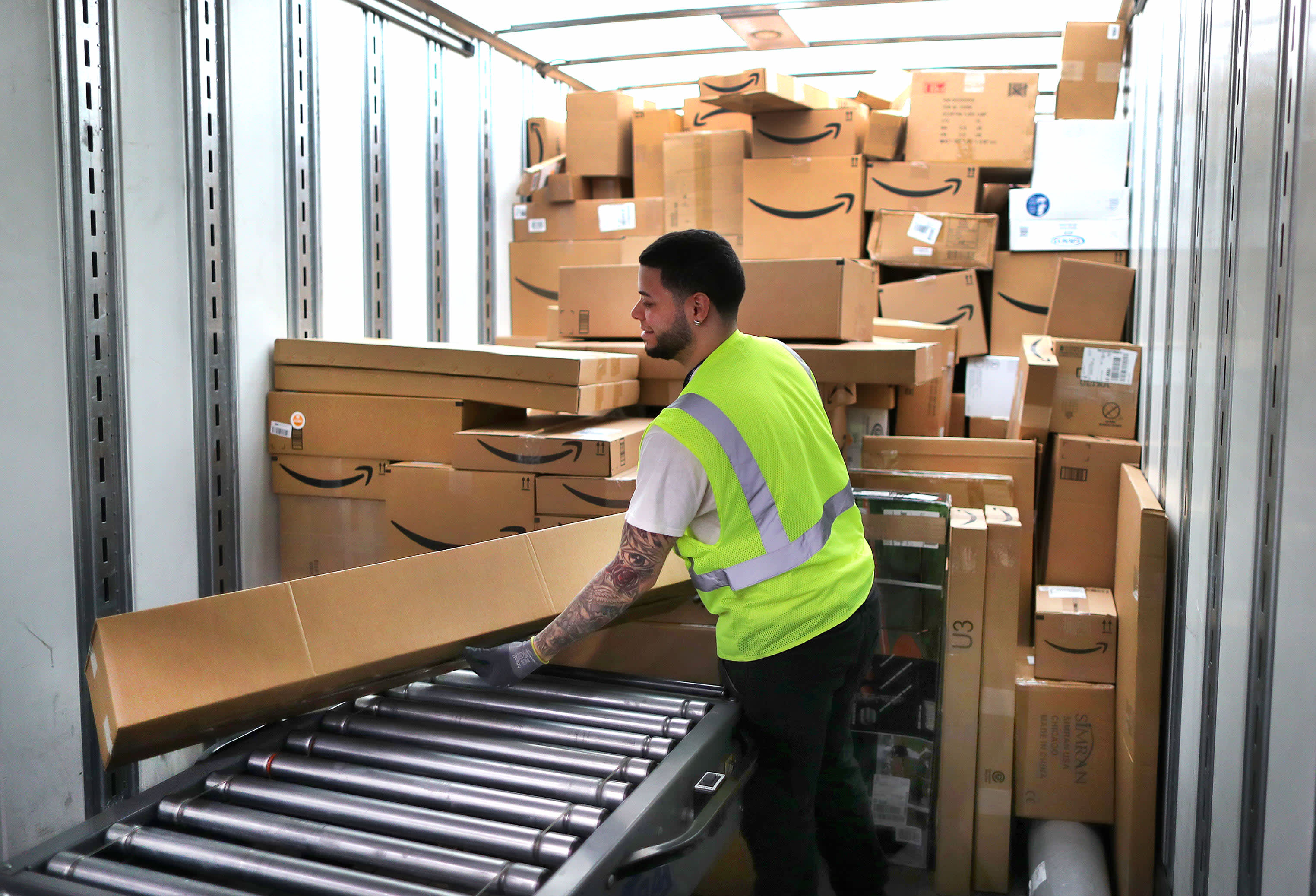A worker loads customer orders into a waiting tractor-trailer inside the million-square foot Amazon distribution warehouse that opened last fall in Fall River, MA on Mar. 23, 2017.
John Tlumacki | Boston Globe | Getty Images
Amazon said third-party sellers on its marketplace earned more than $3.5 billion during this year’s Prime Day shopping event, an increase of nearly 60% compared to last year and a record for the small-and-mid-size businesses that make up the marketplace.
The company, which didn’t disclose total Prime Day sales, said third-party sellers’ Prime Day sales grew even more than Amazon’s retail business.
Prime Day, launched in 2015, has grown to become one of the company’s most important retail and marketing events. It secures new Prime subscribers and allows Amazon to further promote its products and services.
This year’s Prime Day was out of the ordinary, as the coronavirus pandemic forced Amazon to push back the marquee event from mid-July to October. The timing means that the holiday shopping season will kick off earlier than ever. Other major retailers have followed Amazon’s lead and began their discount promotions this month.
Amazon’s range of Echo, Ring, Eero and private label products are usually deeply discounted during Prime Day. Amazon said its smaller and cheaper voice-activated smart speaker, the Echo Dot, was the most popular product this year. Prime Day was held in 20 countries this year.
But the event also sees heavy participation from the more than 2.3 million small- and medium-sized businesses that make up Amazon’s online marketplace. In 2019, third-party sellers saw more than $2 billion in sales during Prime Day. This year, top-selling categories for third-party sellers included bedding, wireless accessories, nutrition and wellness, arts and crafts, as well as health care, Amazon said.
Third-party sellers are of growing importance to Amazon, accounting for about 58% of the company’s total merchandise sold. At that percentage, Amazon stands to have generated at least $7 billion in sales during this year’s Prime Day. Previously, JPMorgan forecast this year’s event could bring in revenue of $7.5 billion, while eMarketer targeted sales of close to $10 billion.
The mega-sale is expected to help the company report a record fourth quarter. Combined with the holiday sales rush, Amazon is expected to exceed $100 billion in quarterly revenue for the first time ever in the fourth quarter, according to analysts surveyed by FactSet.
